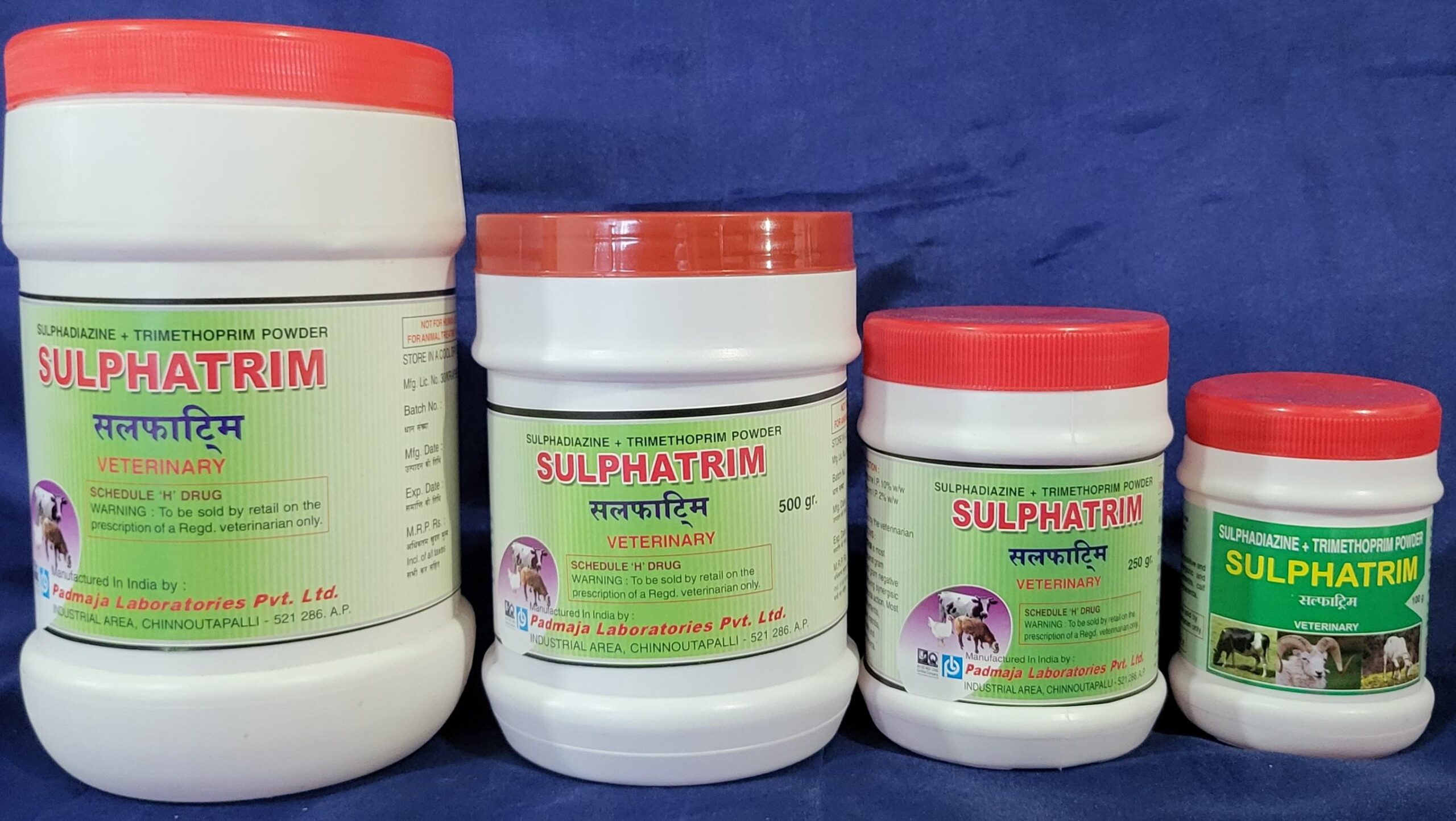SULPHADIAZINE & TRIMETHOPRIM BOLUS & POWDER
Composition :
Each uncoated bolus
Sulphadiazine I.P. 1000 mg
Trimethoprim I.P. 200 mg
Each uncoated bolus contains :
E Sulphadiazine I.P. 400 mg
Trimethoprim I.P
Each uncoated bolus contains :
E Powder: (Sulphatrim Powder)
5 Sulphadiazine I.P. 10% w/w
Sulphadiazine I.P. 2000 mg
IR 400 mg §Trimethoprim I.P. 2% w/w
Trimethoprim
Indications :
Sulphatrim is most effective against gram positive and gram negative bacteria. Having
synergetic and bactericidal action. Most effective in entritis, call scours, metritis, Endometritis and
retained plasenta Potentiated sulfas sequentially inhibit enzymes in the folic and pathway thereby
inhibiting bacterial thymidine synthesis. The sulfonamide blocks the conversion of para-aminobanzoic
acid (PABA) to dihydrofolic acid (DFA) and trimethoprim blocks the conversion of DFA to tetrahydro
folic acid by inhibiting dihydrofolate reductase sulfas have a fairly broad spectrum of activity. Gram
positive bacteria that are generally susceptible include most streptococci, many strains of
staphylococcus and Nocardia Many gram negative organisms of the family Enterobacteriacese are
sus-ceptible to to the potentiated sulfas. Some protozoa (Pneumocystus Carinil, Coccidia and
Toxopiasma) are also inhibited by this combination Trimethoprim sulfadiazine thus imposes a
sequential double blockage of bacterial metabolism. This deprives bacteria of nucleic acids and
proteins essential for survival and multiplication, and produces a high level of antibacterial activity
which is usually bactericidal. Although both sulfadiazine and trimethoprim are antifolate, neither
affects the folate metabolism ofanimals.
The reasons are animals do not synthesize folic acid and cannot therefore, be directly affected by sulfadiazine and although animals must reduce their dietary folic acid to tetrahydrofolic acid trimethoprim does not affect this reduction because its affinity for dihydrofolate reductase of mammais is significantly less than forthe corresponding bacterial enzyme.Trimethoprim / Sulfadiazine is active against a wide spectrum of bacterial pathogens, both gram negative and gram positive. Such as Escherichia,
Dosage :
As advised by the Veterinarian.
Presentation : Sulphadiazine 1000 + Trimethoprim 200 mg : 1,2,4,5 & 10 Bolus
Sulphadiazine 2000 + Trimethoprim 400 mg : 1, 2, 4, 5, 6 8. 10 Bolus.
Sulphadiazine 400 mg + Trimethoprim 80 mg : 1, 2, 4, 5, 6 & 10 Bolus.
Sulphatrim Powder: 10g, 20g, 50g, 100g, 150g, 200g, 250g, 450g, 500 gm 8. 1 kg.



